-
 Bitcoin
Bitcoin $87,772.6996
0.99% -
 Ethereum
Ethereum $1,570.5330
-2.49% -
 Tether USDt
Tether USDt $1.0000
0.01% -
 XRP
XRP $2.0836
-1.10% -
 BNB
BNB $599.1765
0.07% -
 Solana
Solana $138.0201
-2.11% -
 USDC
USDC $0.9999
0.01% -
 Dogecoin
Dogecoin $0.1599
0.63% -
 TRON
TRON $0.2467
0.31% -
 Cardano
Cardano $0.6233
-1.67% -
 Chainlink
Chainlink $13.1154
-2.78% -
 UNUS SED LEO
UNUS SED LEO $9.1017
-1.66% -
 Avalanche
Avalanche $19.7493
-1.09% -
 Stellar
Stellar $0.2496
0.02% -
 Toncoin
Toncoin $2.9084
-3.65% -
 Shiba Inu
Shiba Inu $0.0...01230
-2.09% -
 Sui
Sui $2.2248
2.27% -
 Hedera
Hedera $0.1694
-0.70% -
 Bitcoin Cash
Bitcoin Cash $342.3982
0.49% -
 Hyperliquid
Hyperliquid $18.1794
-0.12% -
 Litecoin
Litecoin $78.6773
-0.19% -
 Polkadot
Polkadot $3.7586
-4.30% -
 Dai
Dai $0.9998
-0.02% -
 Bitget Token
Bitget Token $4.4381
-1.01% -
 Ethena USDe
Ethena USDe $0.9992
0.01% -
 Pi
Pi $0.6309
-1.94% -
 Monero
Monero $214.9808
-0.07% -
 Uniswap
Uniswap $5.2523
-2.33% -
 Pepe
Pepe $0.0...07838
1.42% -
 OKB
OKB $50.7171
-0.70%
What is a flash loan attack on a blockchain?
Flash loan attacks exploit DeFi platforms by borrowing large sums without collateral to manipulate markets or exploit smart contract vulnerabilities, causing significant financial and reputational damage.
Apr 14, 2025 at 11:28 am

A flash loan attack on a blockchain is a type of exploit that takes advantage of the unique features of decentralized finance (DeFi) platforms, particularly the ability to borrow large sums of cryptocurrency without collateral, known as flash loans. These loans must be repaid within the same transaction, which makes them a powerful tool for arbitrage and other financial strategies. However, they can also be used maliciously to manipulate markets or exploit vulnerabilities in smart contracts. In this article, we will explore the mechanics of flash loan attacks, how they are executed, and the impact they can have on the blockchain ecosystem.
Understanding Flash Loans
Flash loans are a feature of some DeFi platforms that allow users to borrow large amounts of cryptocurrency without providing any collateral, as long as the loan is repaid within the same transaction. This is possible due to the atomic nature of blockchain transactions, where either all parts of a transaction succeed or none do. If the loan is not repaid by the end of the transaction, the entire transaction is reverted, and no funds are lost.
The primary use of flash loans is for arbitrage opportunities, where a user can borrow funds to exploit price differences across different platforms. However, this feature can also be exploited for malicious purposes, leading to what is known as a flash loan attack.
Mechanics of a Flash Loan Attack
A flash loan attack involves borrowing a large sum of cryptocurrency through a flash loan and then using those funds to manipulate the market or exploit vulnerabilities in smart contracts. The attacker typically targets DeFi protocols that have vulnerabilities in their code or logic.
Here is a step-by-step breakdown of how a flash loan attack might be executed:
- Borrowing the Flash Loan: The attacker initiates a transaction to borrow a large amount of cryptocurrency from a DeFi platform that supports flash loans.
- Exploiting the Vulnerability: The attacker uses the borrowed funds to interact with another DeFi protocol, exploiting a vulnerability to manipulate prices or extract funds.
- Repaying the Loan: If the attack is successful, the attacker repays the flash loan within the same transaction, ensuring that the transaction is not reverted.
- Profiting from the Attack: The attacker keeps any profits gained from the exploit, which can be significant due to the large sums involved.
Common Types of Flash Loan Attacks
There are several common types of flash loan attacks that have been observed in the DeFi space. Understanding these can help in identifying potential vulnerabilities and mitigating risks.
- Price Manipulation Attacks: In these attacks, the attacker uses the borrowed funds to manipulate the price of an asset on a decentralized exchange (DEX). By artificially inflating or deflating the price, the attacker can then profit from other trades or liquidations.
- Reentrancy Attacks: These attacks exploit a vulnerability in smart contracts where a function can be called repeatedly before the first invocation is finished. The attacker can use flash loans to repeatedly withdraw funds from a contract before the balance is updated.
- Liquidation Attacks: In these scenarios, the attacker uses flash loans to manipulate the price of collateral assets, triggering the liquidation of positions on lending platforms. The attacker can then profit from the liquidated assets.
Real-World Examples of Flash Loan Attacks
Several high-profile flash loan attacks have occurred in the DeFi space, highlighting the potential risks and the need for robust security measures.
- bZx Attacks: In February 2020, the DeFi platform bZx was hit by two separate flash loan attacks. The first attack involved a price manipulation exploit, where the attacker borrowed funds to manipulate the price of an asset on a DEX, resulting in a loss of around $350,000. The second attack was a reentrancy exploit, leading to a loss of approximately $630,000.
- Cream Finance Attack: In August 2021, Cream Finance, a lending platform, was exploited through a flash loan attack that resulted in a loss of around $18.8 million. The attacker used a flash loan to manipulate the price of an asset, triggering the liquidation of a large position and profiting from the liquidated assets.
Mitigating Flash Loan Attacks
To protect against flash loan attacks, DeFi platforms and developers can implement several security measures and best practices.
- Code Audits: Regular and thorough code audits can help identify and fix vulnerabilities in smart contracts before they are exploited. Engaging reputable security firms to conduct these audits is crucial.
- Price Oracle Security: Many flash loan attacks rely on manipulating price oracles. Implementing secure and decentralized price oracles can help prevent these types of attacks.
- Reentrancy Protection: Implementing checks to prevent reentrancy attacks, such as using the "checks-effects-interactions" pattern, can mitigate this specific vulnerability.
- Monitoring and Alerts: Setting up real-time monitoring and alert systems can help detect unusual activities and potential attacks, allowing for quick response and mitigation.
Impact on the Blockchain Ecosystem
Flash loan attacks can have significant impacts on the blockchain ecosystem, affecting not only the targeted platforms but also the broader DeFi community.
- Financial Losses: The most immediate impact is the financial loss suffered by the platforms and users affected by the attack. These losses can be substantial and can lead to a loss of trust in the platform.
- Reputation Damage: Platforms that suffer from flash loan attacks may experience damage to their reputation, making it harder to attract and retain users.
- Increased Security Focus: While flash loan attacks can be detrimental, they also highlight the importance of security in the DeFi space. This can lead to increased focus on security measures and better practices across the industry.
Frequently Asked Questions
Q: Can flash loan attacks be prevented entirely?
A: While it is challenging to prevent flash loan attacks entirely, implementing robust security measures and best practices can significantly reduce the risk. Regular code audits, secure price oracles, and real-time monitoring are essential components of a comprehensive security strategy.
Q: Are flash loans inherently bad for the DeFi ecosystem?
A: Flash loans are not inherently bad; they are a powerful tool that can be used for legitimate purposes such as arbitrage. However, their potential for misuse highlights the need for careful design and security in DeFi protocols.
Q: How can users protect themselves from flash loan attacks?
A: Users can protect themselves by choosing platforms with strong security measures, staying informed about potential vulnerabilities, and diversifying their investments across different protocols to minimize risk.
Q: What role do smart contract developers play in preventing flash loan attacks?
A: Smart contract developers play a crucial role in preventing flash loan attacks by writing secure code, conducting thorough testing and audits, and staying updated on the latest security best practices. Their diligence is essential in safeguarding the DeFi ecosystem.
Disclaimer:info@kdj.com
The information provided is not trading advice. kdj.com does not assume any responsibility for any investments made based on the information provided in this article. Cryptocurrencies are highly volatile and it is highly recommended that you invest with caution after thorough research!
If you believe that the content used on this website infringes your copyright, please contact us immediately (info@kdj.com) and we will delete it promptly.
- Meteora Labs sued by investors over alleged M3M3 token price manipulation
- 2025-04-22 09:40:12
- This is a published version of our weekly Forbes Crypto Confidential newsletter. Sign up here to get Crypto Confidential days earlier free in your inbox.
- 2025-04-22 09:40:12
- Trump Token Unlocks Are When a Group of People—Usually Project Team Members, Early Investors or Advisors—Receive Their Allocated Tokens
- 2025-04-22 09:35:14
- Meme cryptocurrency Dogecoin is currently trading at an important support level against Bitcoin
- 2025-04-22 09:35:14
- Dogecoin (DOGE) Price Broke Out of Two Technical Patterns, Setting the Stage for a Bullish Run
- 2025-04-22 09:30:12
- Mutuum Finance (MUTM) Presale Raises Over $7M From 8400+ Buyers
- 2025-04-22 09:30:12
Related knowledge
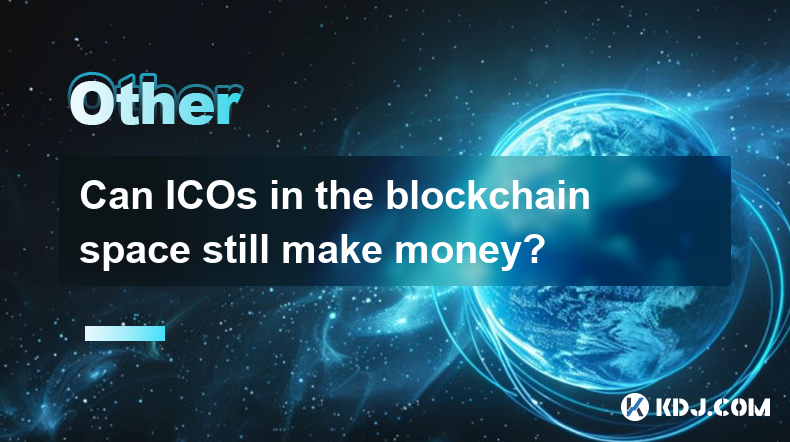
Can ICOs in the blockchain space still make money?
Apr 17,2025 at 08:29pm
The landscape of Initial Coin Offerings (ICOs) in the blockchain space has evolved significantly since their peak in 2017 and 2018. Despite the increased regulatory scrutiny and the rise of alternative fundraising methods like Security Token Offerings (STOs) and Initial Exchange Offerings (IEOs), ICOs can still be a viable way to raise funds and generat...

Can the application of blockchain in supply chain finance bring benefits?
Apr 15,2025 at 04:00pm
Can the application of blockchain in supply chain finance bring benefits? The integration of blockchain technology into supply chain finance has garnered significant attention in the cryptocurrency and financial sectors. This article explores how blockchain can potentially revolutionize supply chain finance, detailing its benefits and providing a compre...
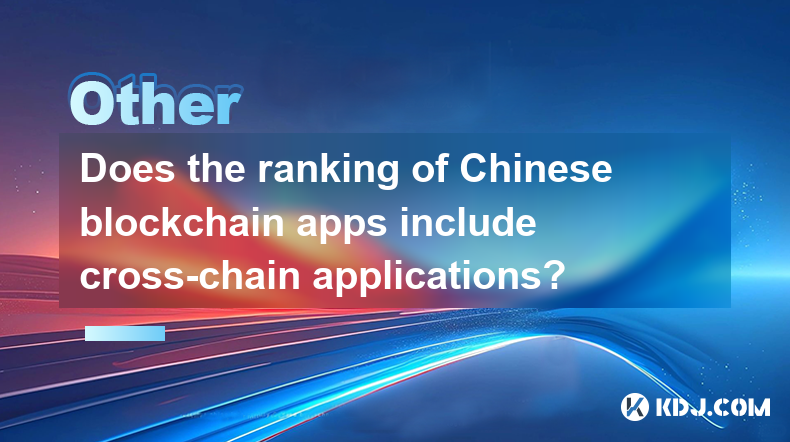
Does the ranking of Chinese blockchain apps include cross-chain applications?
Apr 14,2025 at 04:00pm
The ranking of Chinese blockchain apps is a comprehensive evaluation that takes into account various aspects such as user base, transaction volume, and technological innovation. A pertinent question arises regarding whether these rankings include cross-chain applications. Cross-chain applications, which allow different blockchain networks to interact an...
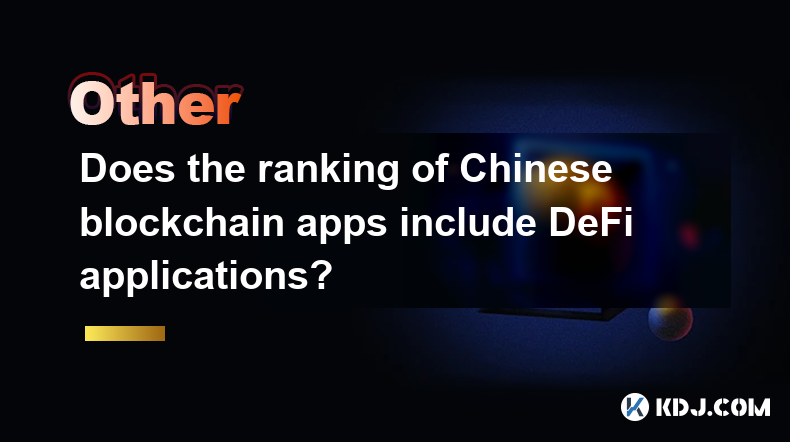
Does the ranking of Chinese blockchain apps include DeFi applications?
Apr 15,2025 at 06:57am
The ranking of Chinese blockchain apps is a comprehensive list that showcases the most popular and influential applications within the cryptocurrency ecosystem. One question that often arises is whether these rankings include DeFi applications. To answer this, we need to delve into the specifics of how these rankings are compiled and what types of appli...
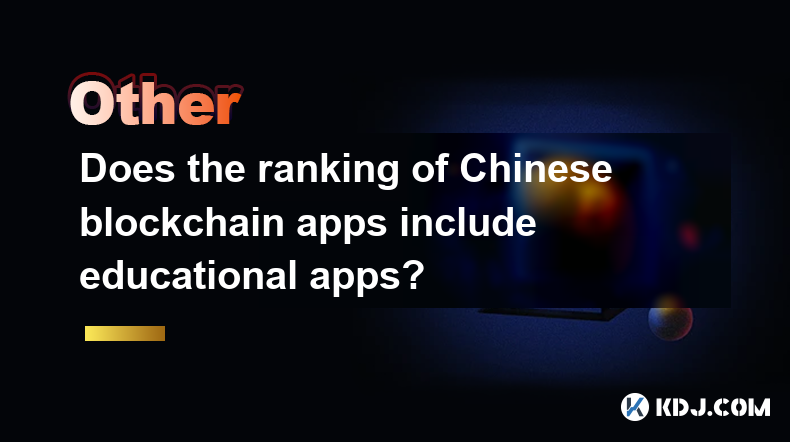
Does the ranking of Chinese blockchain apps include educational apps?
Apr 16,2025 at 03:35am
The ranking of Chinese blockchain apps often includes a variety of categories, from finance and gaming to social networking and beyond. One question that frequently arises is whether these rankings include educational apps. To address this, we need to delve into the specifics of how blockchain apps are categorized and ranked in China, and whether educat...
Does the ranking of Chinese blockchain apps include enterprise-level applications?
Apr 15,2025 at 06:42am
The ranking of Chinese blockchain apps often includes a variety of applications, ranging from consumer-focused to enterprise-level solutions. Understanding the scope and criteria for these rankings is essential to determine if enterprise-level applications are included. This article delves into the specifics of how Chinese blockchain app rankings are co...

Can ICOs in the blockchain space still make money?
Apr 17,2025 at 08:29pm
The landscape of Initial Coin Offerings (ICOs) in the blockchain space has evolved significantly since their peak in 2017 and 2018. Despite the increased regulatory scrutiny and the rise of alternative fundraising methods like Security Token Offerings (STOs) and Initial Exchange Offerings (IEOs), ICOs can still be a viable way to raise funds and generat...

Can the application of blockchain in supply chain finance bring benefits?
Apr 15,2025 at 04:00pm
Can the application of blockchain in supply chain finance bring benefits? The integration of blockchain technology into supply chain finance has garnered significant attention in the cryptocurrency and financial sectors. This article explores how blockchain can potentially revolutionize supply chain finance, detailing its benefits and providing a compre...

Does the ranking of Chinese blockchain apps include cross-chain applications?
Apr 14,2025 at 04:00pm
The ranking of Chinese blockchain apps is a comprehensive evaluation that takes into account various aspects such as user base, transaction volume, and technological innovation. A pertinent question arises regarding whether these rankings include cross-chain applications. Cross-chain applications, which allow different blockchain networks to interact an...

Does the ranking of Chinese blockchain apps include DeFi applications?
Apr 15,2025 at 06:57am
The ranking of Chinese blockchain apps is a comprehensive list that showcases the most popular and influential applications within the cryptocurrency ecosystem. One question that often arises is whether these rankings include DeFi applications. To answer this, we need to delve into the specifics of how these rankings are compiled and what types of appli...

Does the ranking of Chinese blockchain apps include educational apps?
Apr 16,2025 at 03:35am
The ranking of Chinese blockchain apps often includes a variety of categories, from finance and gaming to social networking and beyond. One question that frequently arises is whether these rankings include educational apps. To address this, we need to delve into the specifics of how blockchain apps are categorized and ranked in China, and whether educat...

Does the ranking of Chinese blockchain apps include enterprise-level applications?
Apr 15,2025 at 06:42am
The ranking of Chinese blockchain apps often includes a variety of applications, ranging from consumer-focused to enterprise-level solutions. Understanding the scope and criteria for these rankings is essential to determine if enterprise-level applications are included. This article delves into the specifics of how Chinese blockchain app rankings are co...
See all articles






















































































